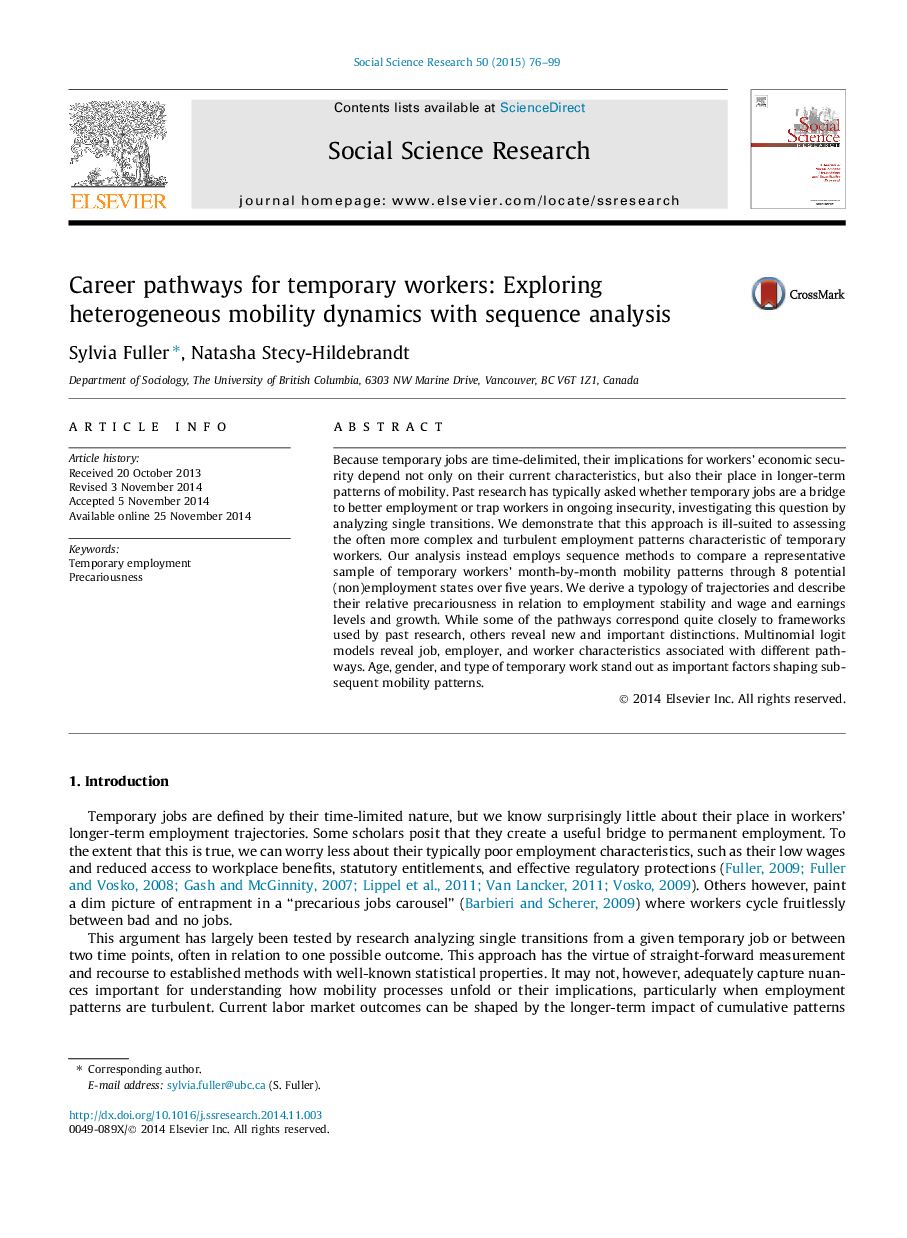| Article ID | Journal | Published Year | Pages | File Type |
|---|---|---|---|---|
| 7339118 | Social Science Research | 2015 | 24 Pages |
Abstract
Because temporary jobs are time-delimited, their implications for workers' economic security depend not only on their current characteristics, but also their place in longer-term patterns of mobility. Past research has typically asked whether temporary jobs are a bridge to better employment or trap workers in ongoing insecurity, investigating this question by analyzing single transitions. We demonstrate that this approach is ill-suited to assessing the often more complex and turbulent employment patterns characteristic of temporary workers. Our analysis instead employs sequence methods to compare a representative sample of temporary workers' month-by-month mobility patterns through 8 potential (non)employment states over five years. We derive a typology of trajectories and describe their relative precariousness in relation to employment stability and wage and earnings levels and growth. While some of the pathways correspond quite closely to frameworks used by past research, others reveal new and important distinctions. Multinomial logit models reveal job, employer, and worker characteristics associated with different pathways. Age, gender, and type of temporary work stand out as important factors shaping subsequent mobility patterns.
Keywords
Related Topics
Social Sciences and Humanities
Psychology
Social Psychology
Authors
Sylvia Fuller, Natasha Stecy-Hildebrandt,
